

Alexandra Kozyreva, Ehud Nakar, Roni Waldman
MNRAS 499, 4312 (2020)
ADS,
arXiv eprint 1811.08713
In the present study, we systematically explore the effect of the radioactive 56Ni and its mixing properties in the ejecta on the plateau of Type IIP supernovae (SNe). We evaluate the importance of 56Ni in shaping light curves of SNe IIP by simulating light curves for two red supergiant models (m12 and m15) using different amounts of 56Ni and with different types of mixing: uniform distribution of 56Ni out to different fractions of the envelope and boxcar distribution of 56Ni. We find, similarly to previous studies, that 56Ni extends duration of the plateau. We find a formula to estimate the extension based on the observed bolometric light curves and show that for most SNe IIP by about 20 %. Another effect of 56Ni consists in reduction of the plateau decline rate, i.e. 56Ni presented in the ejecta flattens the plateau. Our simulations suggest that for typical SNe IIP it can reduce the decline rate by about 1 mag/100 day. We find that for the contribution of 56Ni seen in most SNe our simulated bolometric light curves resemble observed ones for various types of 56Ni mixing. We thereby cannot determine the level of 56Ni mixing in these SNe based on the light curve alone. However, for SN 2009ib we find that only a model where 56Ni is mixed significantly throughout most of the hydrogen envelope is consistent with the observed light curve.
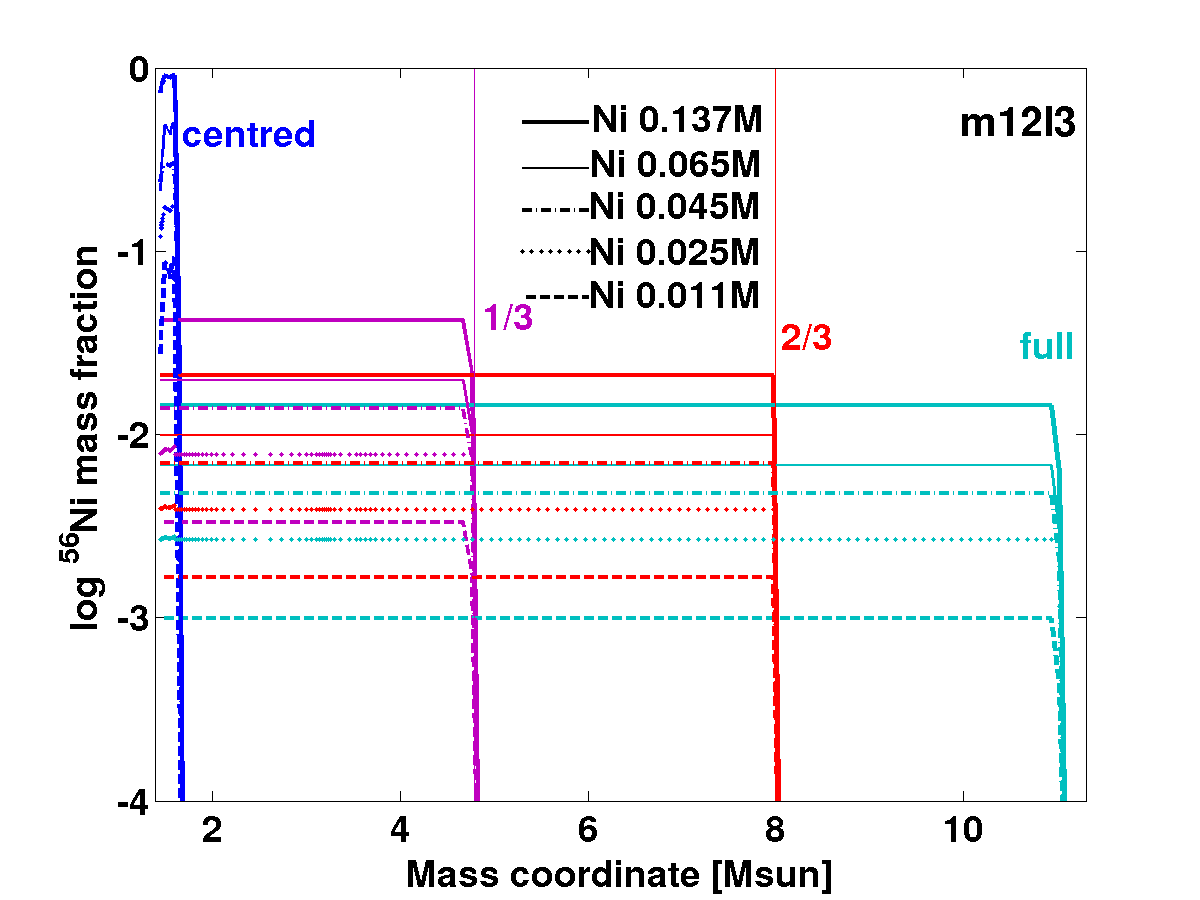 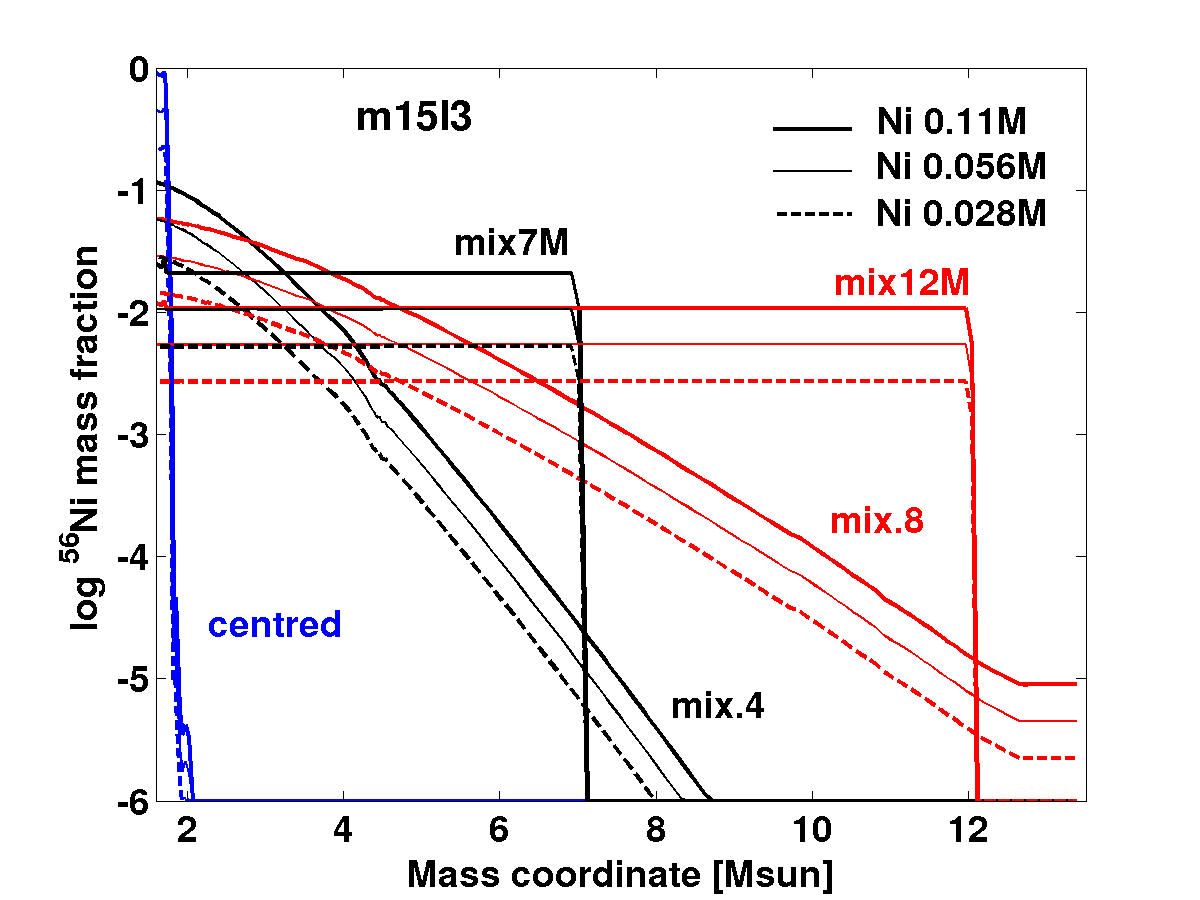
| |||||||||||||||||||||||||||||||||||||||||||||||||||||||||||||||||||||||||||||||||||||||||||||||||||||||||||||||||||||||||||||||||||||||||||||||||||||||||||||||||||||||
|
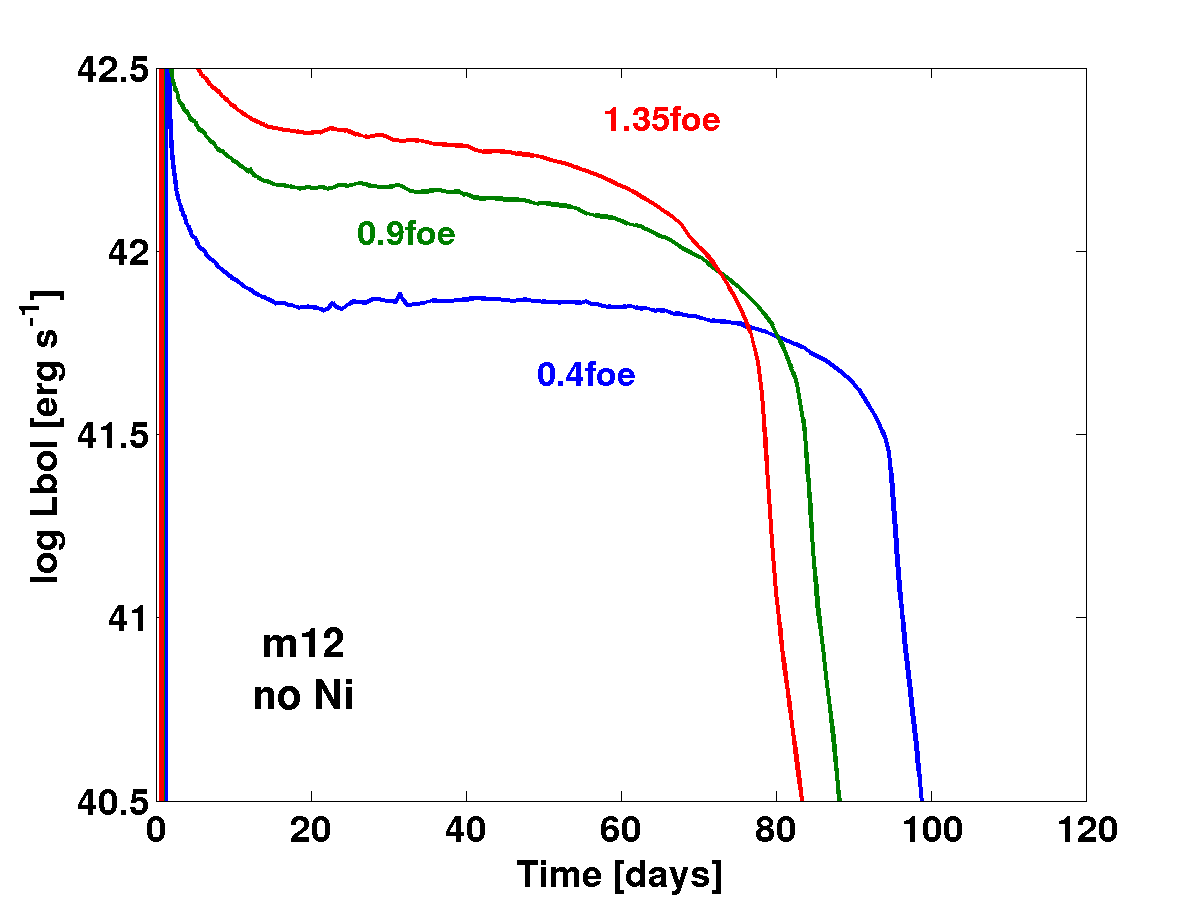 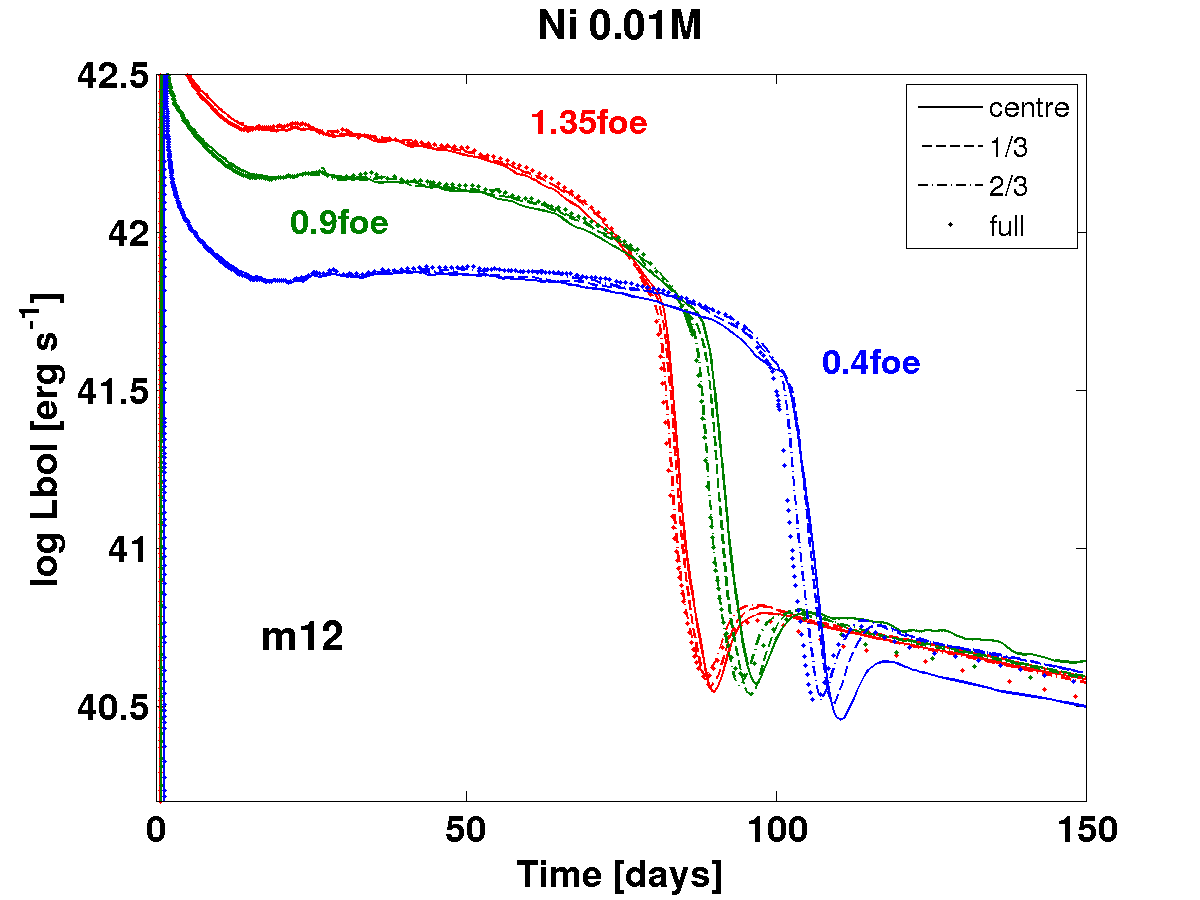 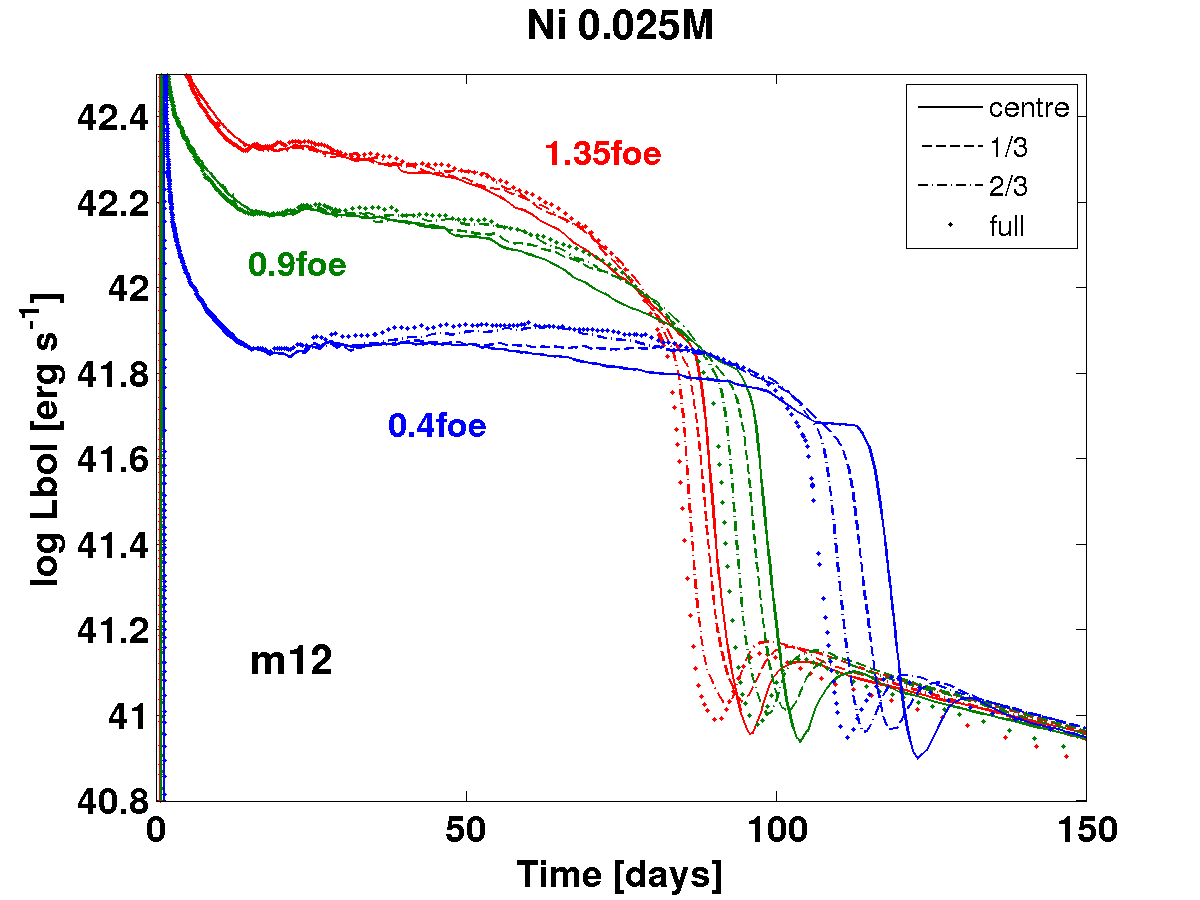 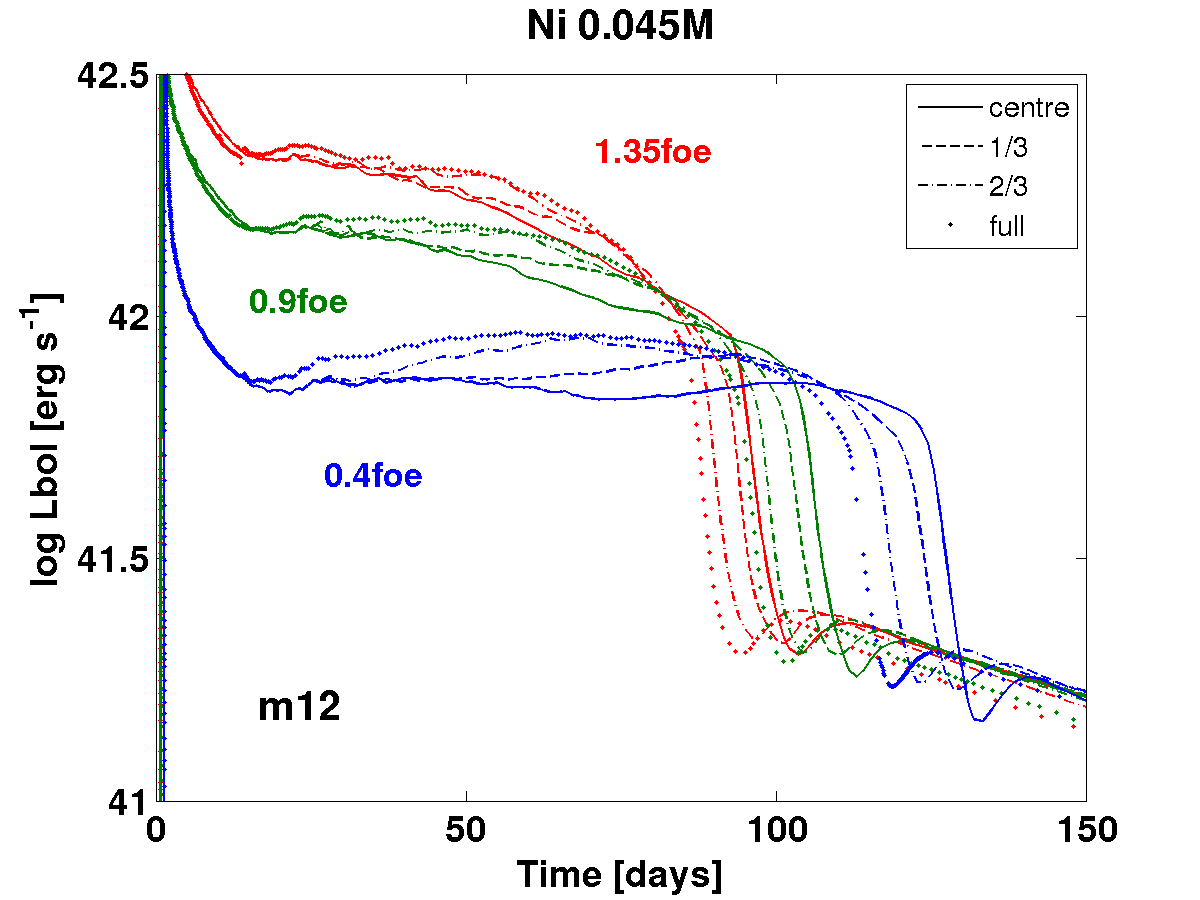 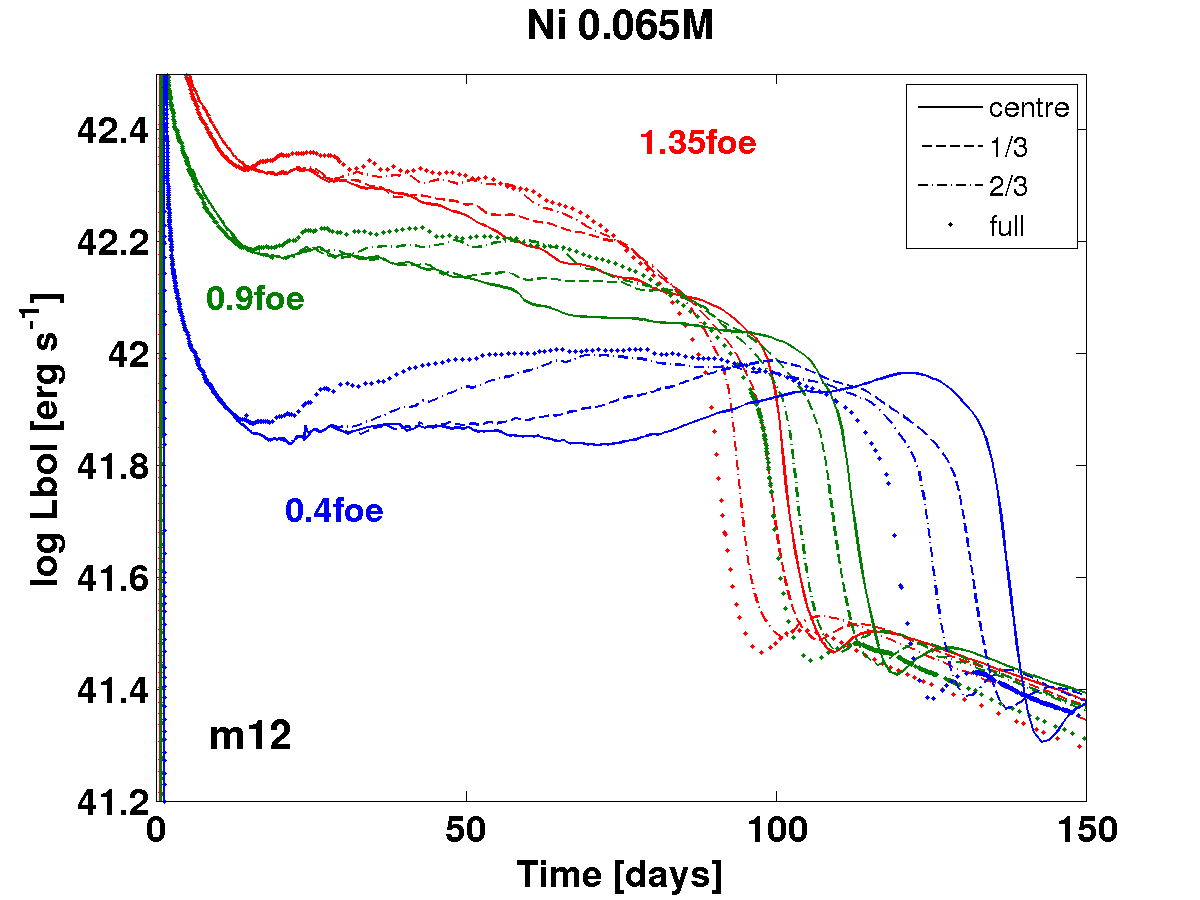 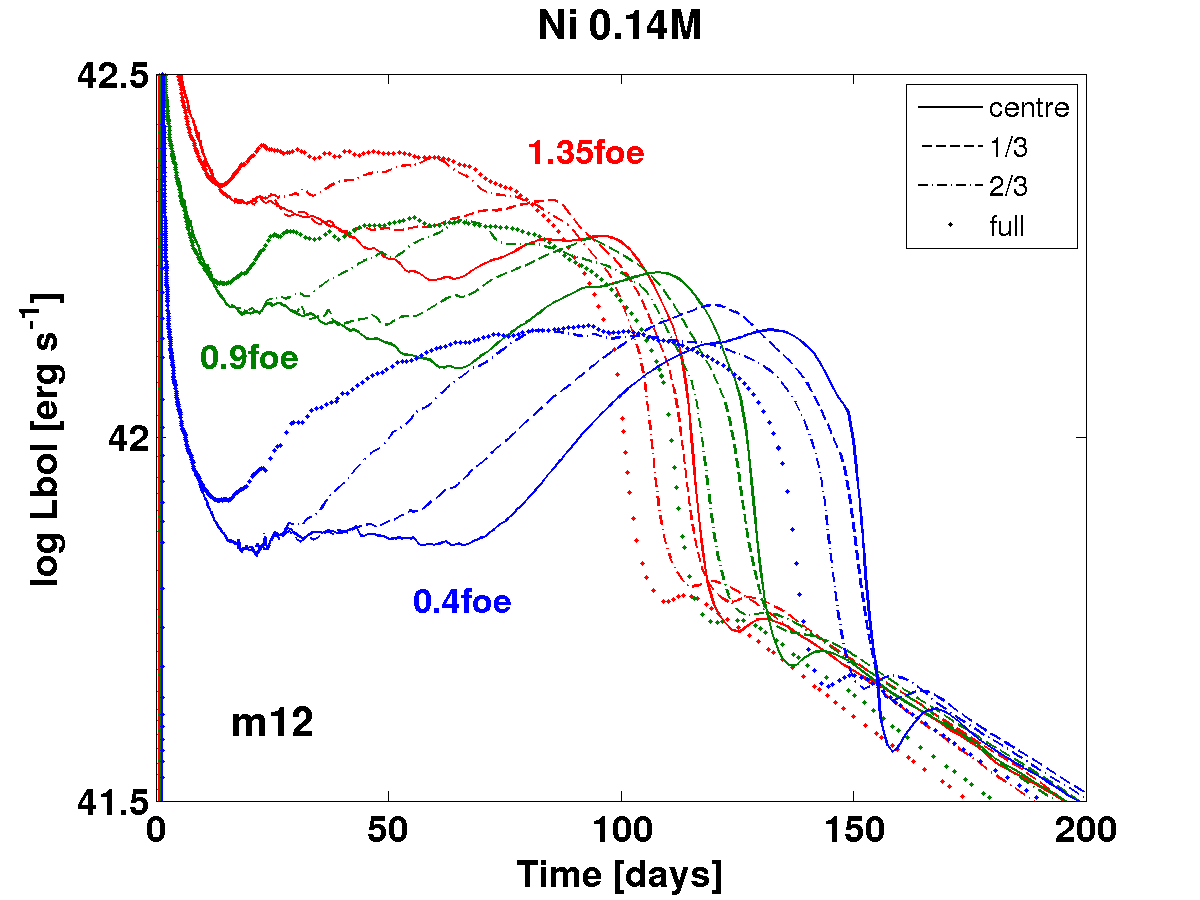
|
|
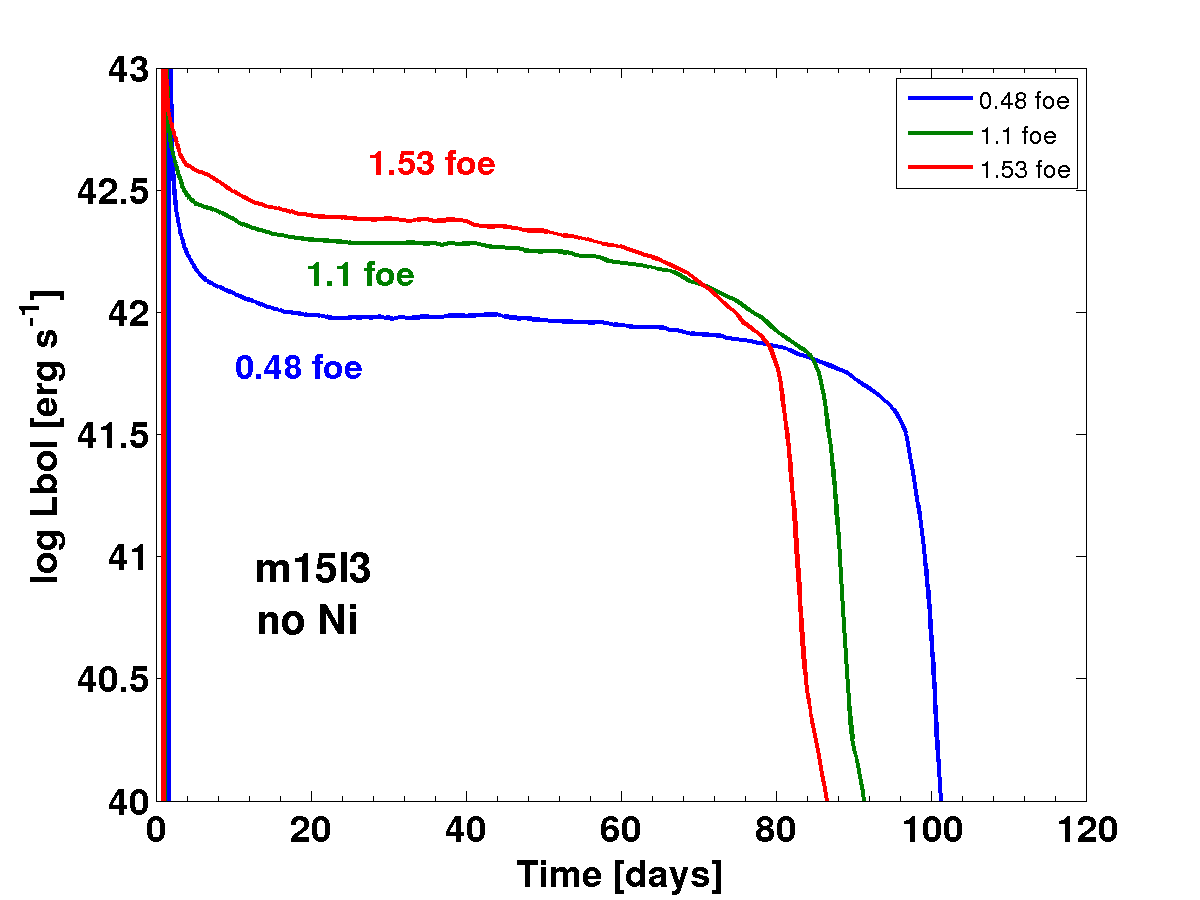 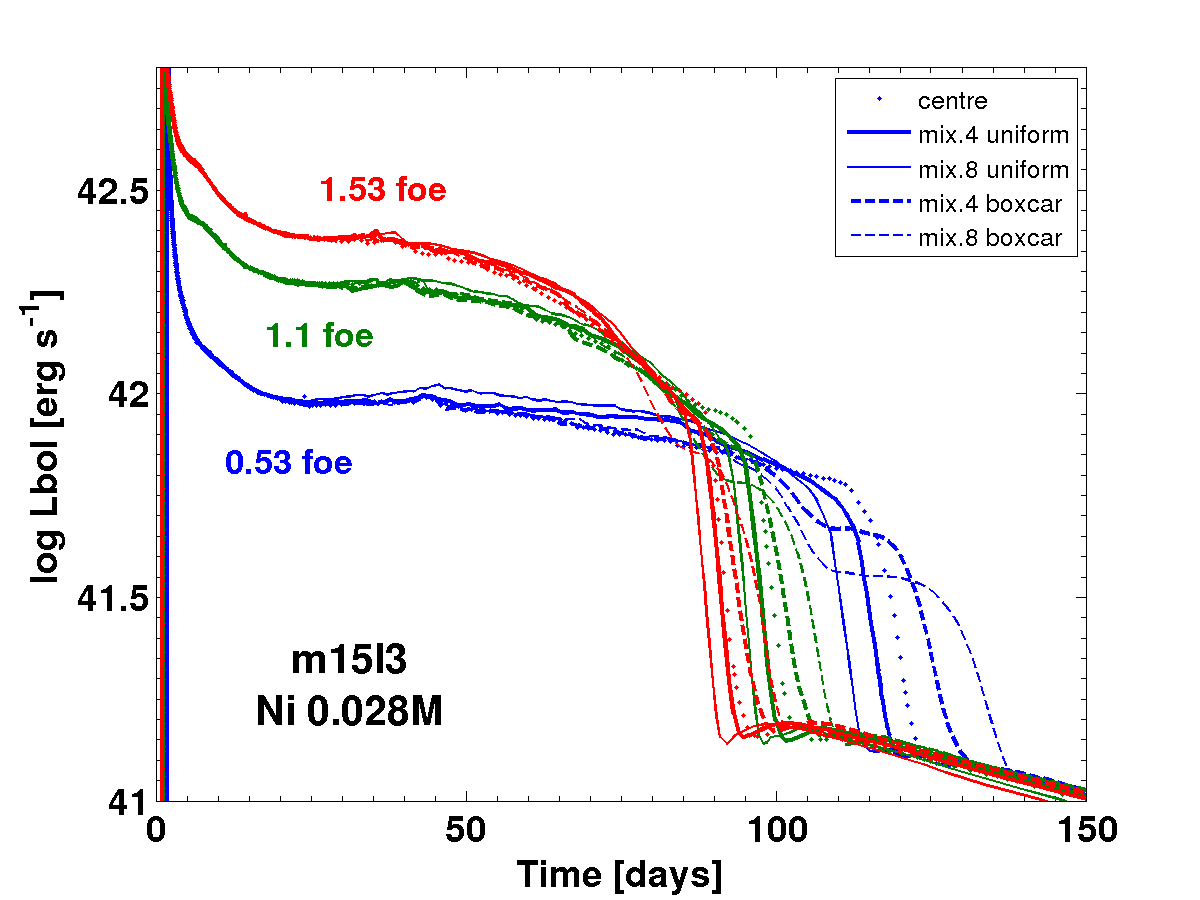 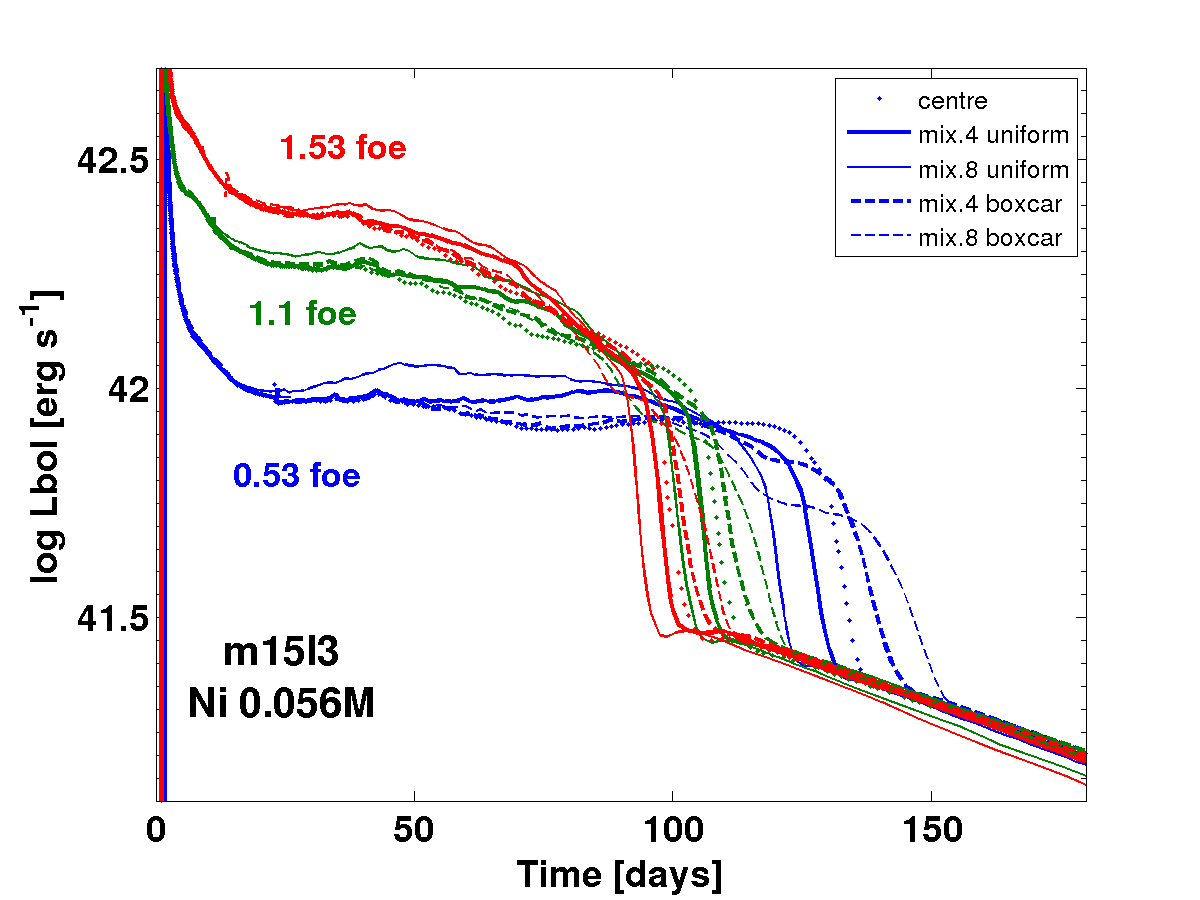 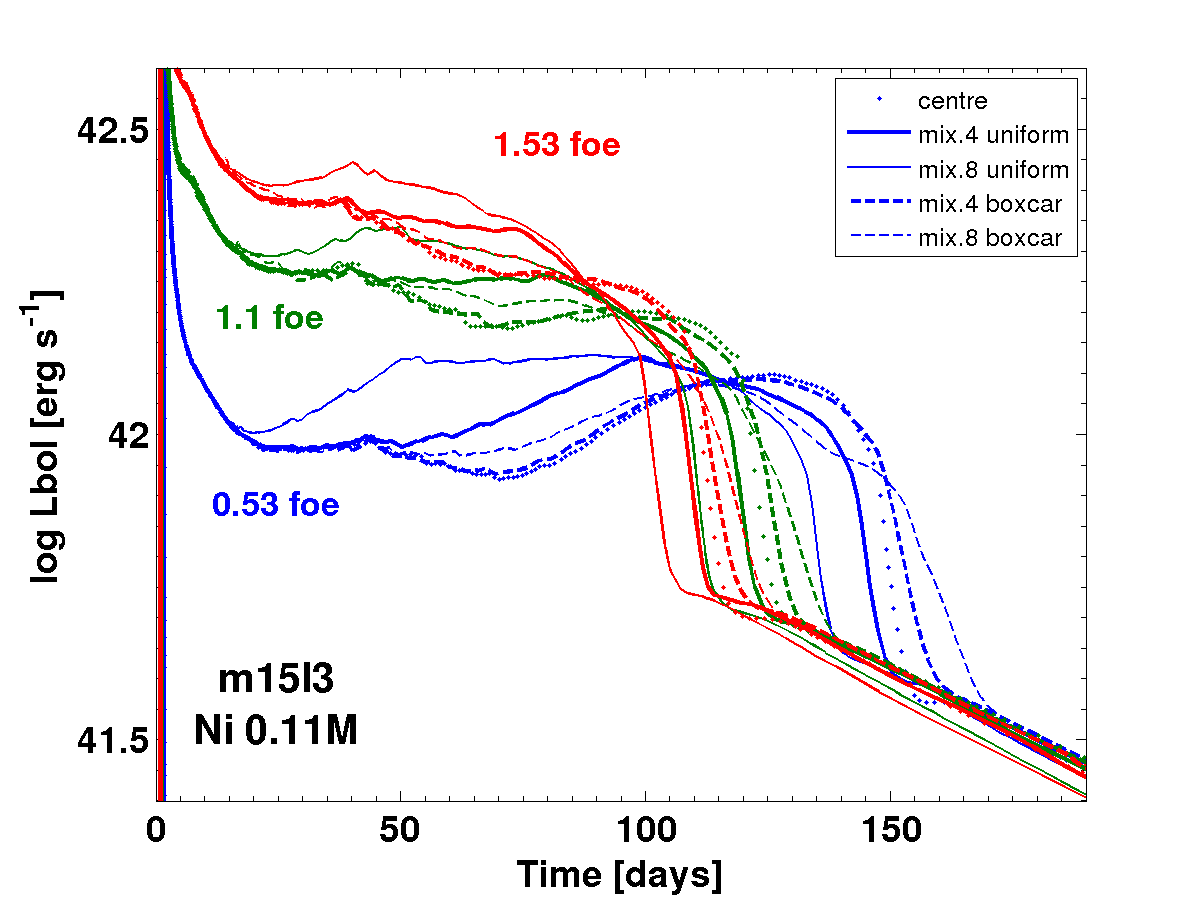
| ||||||||||||||||||||||||||||||||||||||||||||||||||||||||||||||||||||||||||||||||||||||||||||||||||||||||||||||||||||||||||||||||||||||||||||||||||||||||||||||||||||
(1) time [days] (2) UBVRI-pseidobolometric [erg/s] (3) bolometric [erg/s] (4)
X-ray-EUV <325Å (5) IR >890Å
Luminosities are in log10-scale.